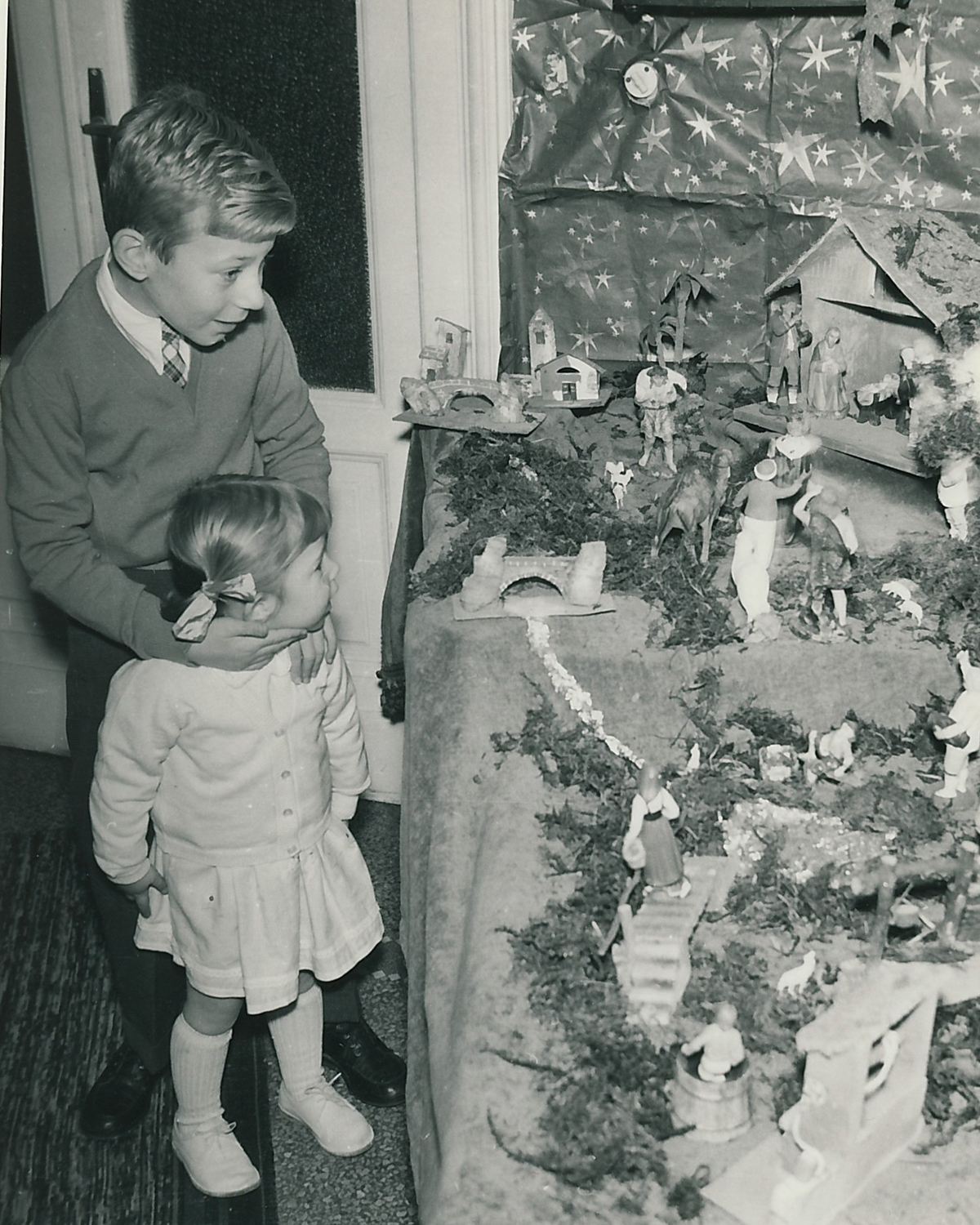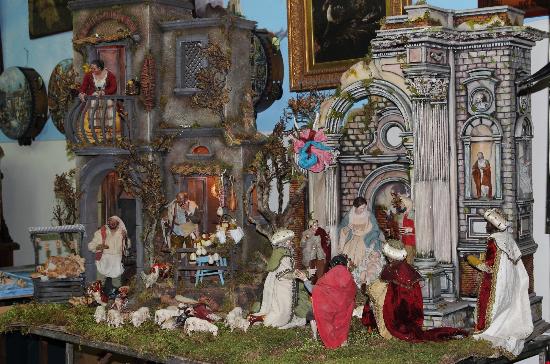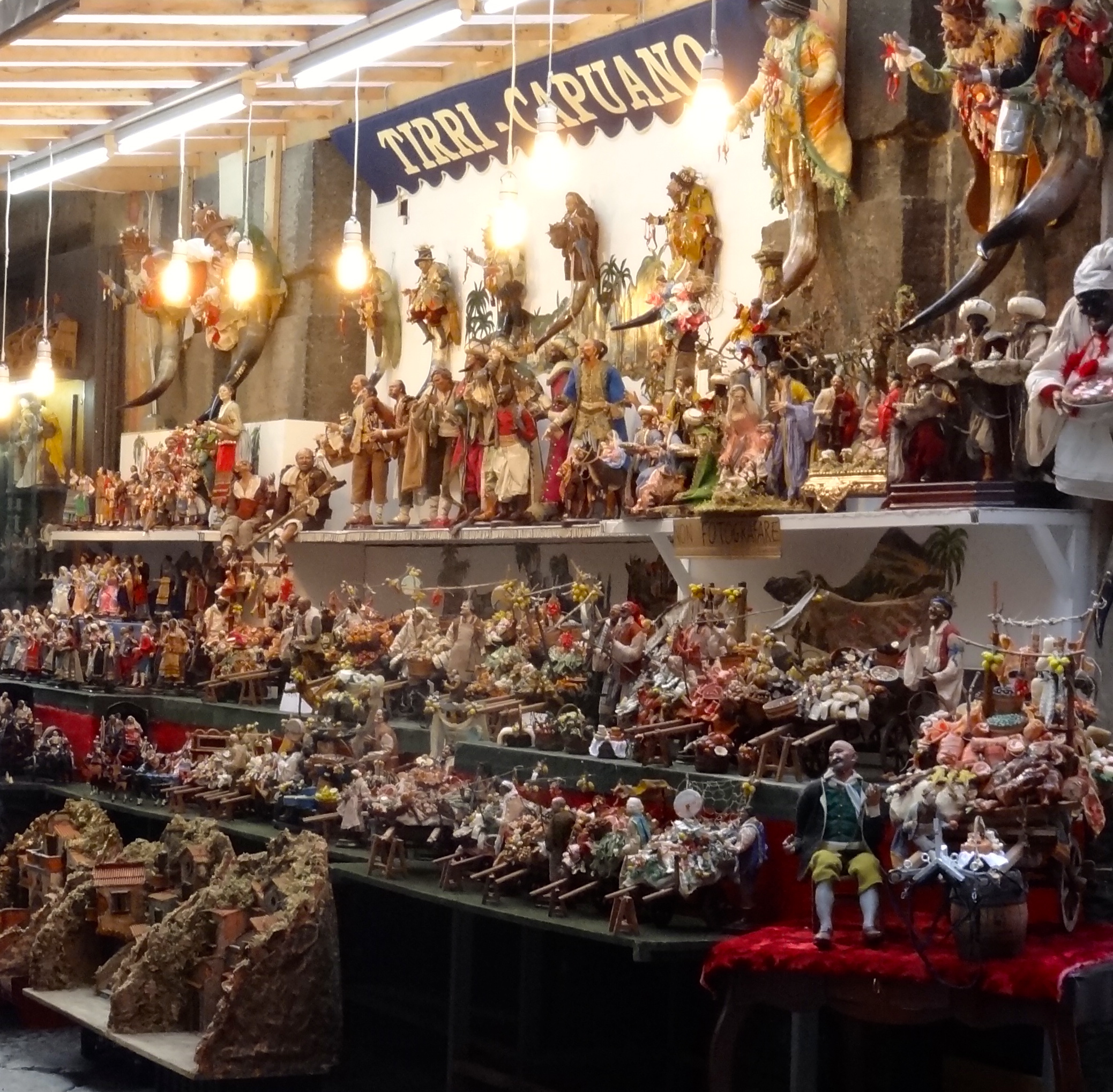
My dad and his younger sister Tina admiring a Presepio in the late 1950s.
Today's family stories post comes from my Aunt Tina. She tells the story of the tradition of the Neapolitan Presepio, one she and my dad enjoyed as children. Today she shares that great tradition with tourists through her company Discover Napoli Destinations.
The Neapolitan “Presepio” or Nativity scene is the most cherished Christmas tradition in southern Italy. During the XVIII century, the royal family introduced the custom of having a space set up to honor the birth of Christ, and in the weeks preceding Christmas, a sumptuous nativity scene was set up and admired by all those who had access to the monarchs. Soon the Nativity scene expanded more and more outside the mere representation of the Holy Family, and it started to include the shepherds, the merchants, the animals and a careful analysis of the food of that period. The figurines were sculpted by the major artists of the time, such as Giuseppe Sammartino, creator of the famous statue of the “Veiled Christ.” The backdrop of the scenes featured typical aspects of Neapolitan life, such as taverns, fishmongers and butchers hanging their wares outside of their shops.

For this reason, it is possible to find a particular significance for each member of the scene, each particular location represented and even for the single elements that compose the entire scene! The whole Nativity and the figures it contains become a way of describing, identifying and unifying the community from which it stems. The Neapolitan Nativity scene was and still is an element of identification of the “gens napoletana,” a collective common personality and the forerunner of the realism that characterizes Neapolitan theatrical and movie productions.

It quickly became fashionable for all aristocratic families, soon followed by those of the bourgeoisie, to display a “Presepio” in each home, obviously on a much simpler scale than the royal one, and in the following years, even the poorer classes honored the coming of Christ by setting up a small Nativity in their homes. The demand for the figurines became incredible, and a new work force emerged, specializing in the figurines as well as the simple or incredibly ornate backdrops for the setting. These artisans were all concentrated in the area around the Church of San Gregorio Armeno, and thus “Christmas Alley” was born!
Today Via San Gregorio Armeno, also known as “Christmas Alley," has become a major tourist attraction. Some of the cheaper figurines are molded in plastic, but Neapolitan families still visit every year to add a “piece” to their Presepio! Usually the children of the family choose the new elements to add each year, expanding their scene with a pizza oven or a waterfall, or replacing the figures which inevitably break when they are wrapped up and put away after the Epiphany. It is a moment of major bonding for the families, and each member participates in the composition of the Presepio. Christmas Alley is one of the major traditions that has survived in Naples and is an important part of Neapolitan cultural heritage.
A strong link to the Presepio is also found in the tradition of placing the Holy Child in the Nativity scene at midnight, or upon returning home from the midnight mass where the little figures of baby Jesus are blessed. The family forms a procession, singing an ancient carol about the birth of Christ and the youngest member is usually the one who has the honor of placing the figurine in the Nativity scene. The Christmas festivities can then officially begin!
A big thank you to my Aunt Tina for sharing this great tradition with us!

